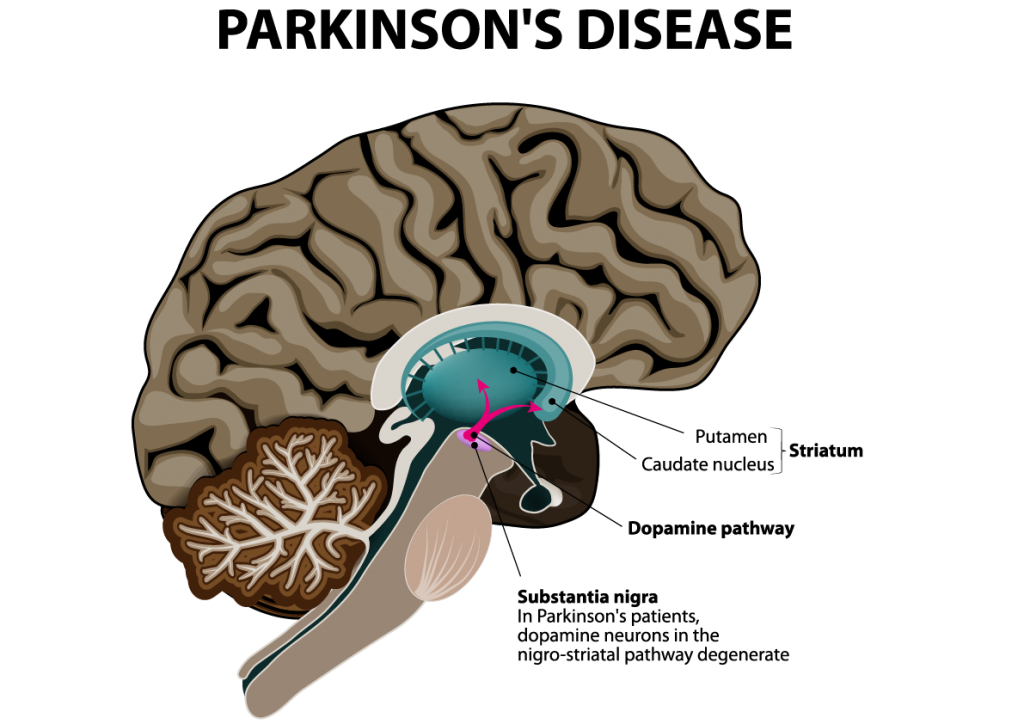Parkinson’s disease (PD) is a progressive disorder of the central nervous system that affects movement often including tremors mainly at rest, limb rigidity, gait and balance problems. Nerve cell damage in the brain causes dopamine levels to drop leading to the symptoms of PD.
Current diagnosis is based on symptoms. By the time symptoms are severe enough, 80% of dopaminergic cells have decayed in a specific area of the brain called substantia nigra. This means diagnosis is late into PD progress.
The cause remains unknown. Although there is no cure, treatment options vary. Scientist have been exploring ways to identify biomarkers for PD that can lead to earlier diagnosis and more tailored treatments to slow down the disease progression.
Disease progression is characterized by nerve cell decay that thins the walls of the retina. The retina is the layer of tissue that lines the back of the eyeball. The disease also affects the microvascular (microscopic blood vessels).
Research is being presented at the annual meeting of the Radiological Society of North America (RSNA). Scientist have determined a simple eye exam combined with powerful Artificial Intelligence (AI) machine learning technology could provide early detection of PD. The researchers deployed a type of AI called Support Vector Machine (SVM) learning that has been around since 1989. Using pictures of the back of the eye from patients with PD and control participants that do not have the disease, researchers are able to teach the SVM to detect signs of the disease on the images. The results suggested that the machine learning networks can classify PD based on retina vasculature with the key feature being smaller blood vessels.
This method further supports the theory that changes in brain physiology can be observed in the eye. The findings in this study show that brain disease can be diagnosed with simple imaging of the eye.
This new approach eliminates costly MRIs and CT scans. It uses basic photography commonly available in eye clinics. This research may also be applicable for diagnostics in identifying other brain diseases such as Alzheimer’s and MS.
#eyegotcha #parkinsonsdisease #AI #SVM
Sources:

